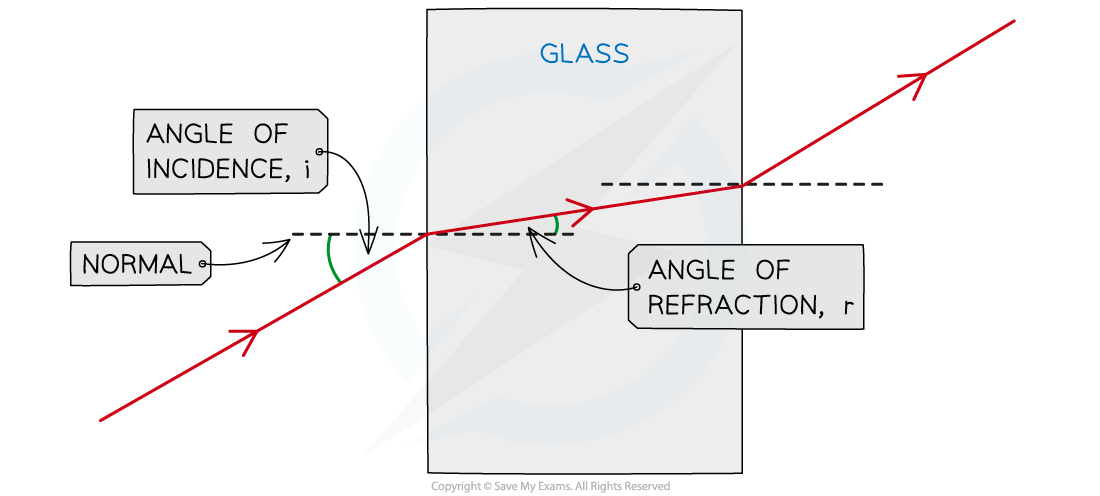Measuring Refractive Index (Edexcel International AS Physics) : Revision Note
Measuring Refractive Index
Aim of the Experiment
To investigate the refraction of light through a perspex block
Equipment
Ray Box - to provide a narrow beam of light to refract through the perspex box
Protractor - to measure the light beam angles
Sheet of paper - to mark with lines for angle measurement
Pencil - to make perpendicular line and angle lines on paper
Ruler - to draw straight lines on the paper
Perspex block - to refract the light beam
Variables
Dependent variable = angle of refraction , r
Control variables:
Use of the same perspex block
Width of the light beam
Same frequency / wavelength of the light
Method

Apparatus to investigate refraction
Place the perspex block on a sheet of paper, and draw around it using a pencil
Switch on the ray box and direct a beam of light at the side face of the block
Mark on the paper with a small 'x':
A point on the ray close to the ray box
The point where the ray enters the block
The point where the ray exits the block
A point on the exit light ray which is a distance of about 5 cm away from the block
Draw a dashed line normal (at right angles) to the outline of the block
Remove the block and join the points marked 'x' with three straight lines
Replace the block within its outline and repeat the above process for a ray striking the block at different angles of incidence
An example of the data collection table is shown below:

Analysis of Results
i and r are always measured from the normal
For light rays entering perspex block, the light ray refracts towards the central line:
i > r
For light rays exiting the perspex block, the light ray refracts away from the central line:
i < r
When the angle of incidence is 90° to the perspex block, the light ray does not refract, it passes straight through the block:
i = r
If the experiment was carried out correctly, the angles should follow the pattern, as shown below:

How to measure the angle of incidence and angle of refraction
Safety Considerations
The ray box light gets hot and could burn if touched
Run burns under cold running water for at least five minutes
Looking directly into the light may damage the eyes
Avoid looking directly at the light
Stand behind the ray box during the experiment
Keep all liquids away from the electrical equipment and paper
Take care using the perspex
Damage to the perspex block can affect the outcome of the experiment
Examiner Tips and Tricks
In your examination you could be asked about the method for this experiment or given a set of results and asked how accurate they are or how they can be improved.

You've read 0 of your 5 free revision notes this week
Sign up now. It’s free!
Did this page help you?
